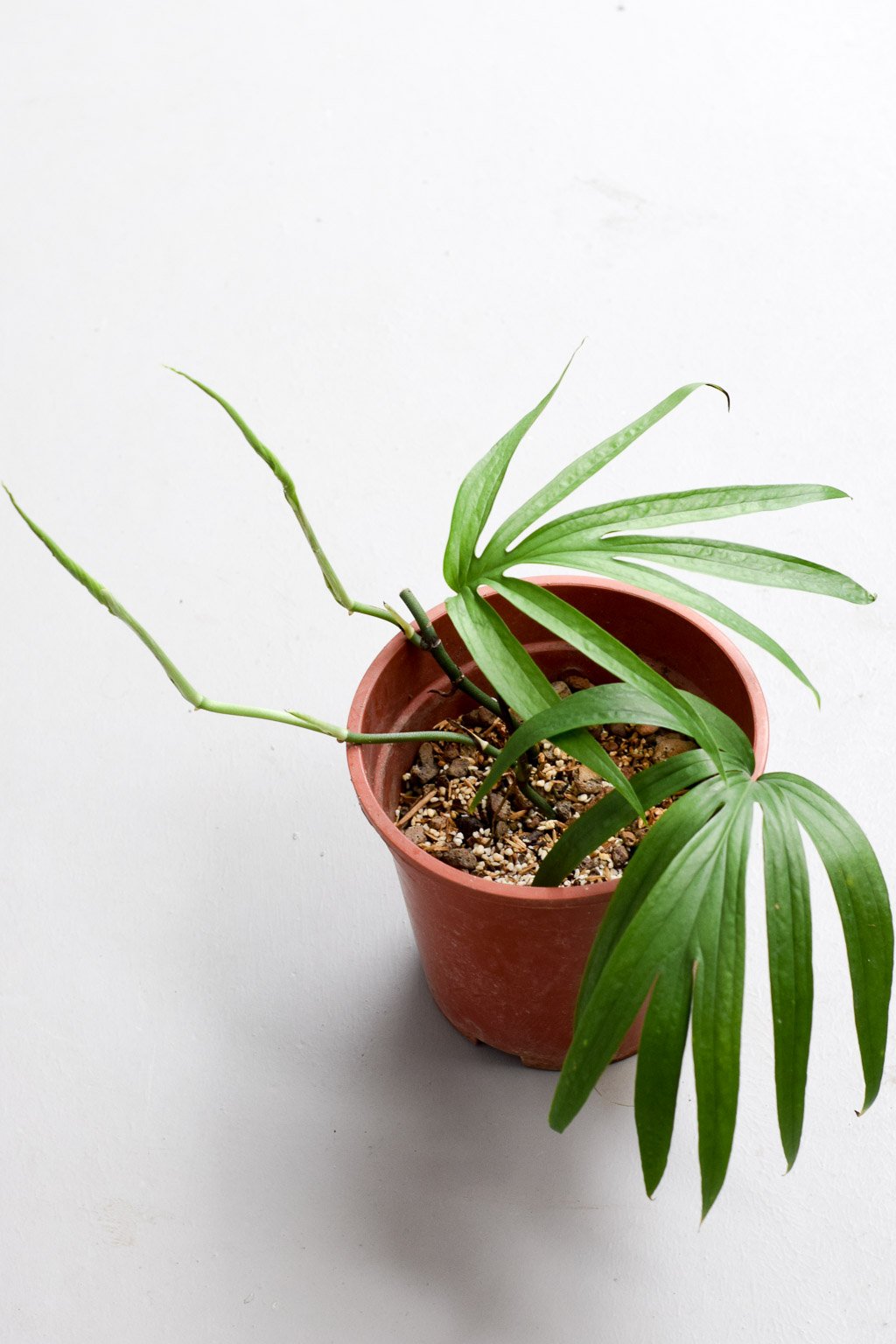Amydrium Zippelianum Care
If you're looking for a unique plant to add to your collection, look no further than the amydrium zippelianum, also known as the climbing anthurium. This stunning plant, with its dark green leaves and vibrant white veins, is sure to catch the eye of anyone who sees it. And while it may look intimidating to care for, with a little knowledge and practice, anyone can keep this plant healthy and thriving.
Pain Points
If you're new to caring for plants, the amydrium zippelianum can seem like a daunting challenge. It requires a bit more attention than some other houseplants, and if you don't take care of it properly, it can quickly begin to decline. Some common issues people encounter with this plant include yellowing leaves, slow growth, and a lack of new growth.
Target of Amydrium Zippelianum Care
To keep your amydrium zippelianum healthy, there are a few key things to keep in mind. First, it's important to make sure the plant is getting the right amount of light and humidity. These plants prefer bright, indirect light and thrive in humid environments. You'll also want to make sure you're watering it properly – overwatering can be just as harmful as under-watering. Finally, make sure you're fertilizing it regularly to provide the nutrients it needs to grow.
Summary
Overall, caring for an amydrium zippelianum requires attention to detail, but with the right care, it can be a stunning addition to your home. To keep yours healthy, make sure it's getting the right amount of light and humidity, water it properly, and fertilize it regularly. With these tips in mind, your plant will grow and thrive for years to come.
The Importance of Proper Lighting
One of the most important aspects of amydrium zippelianum care is providing it with enough light. While it's important not to expose the plant to direct sunlight, it does need bright, indirect light to thrive. I've found that placing my plant near a window that doesn't receive direct sunlight works well. If your plant isn't getting enough light, you may notice slow growth or yellowing leaves.

Additionally, it's important to keep in mind that these plants are native to tropical environments, and as such, they prefer high humidity levels. Placing a humidifier near your plant can help it thrive, especially during the dry winter months when indoor air can become particularly dry.
Watering the Amydrium Zippelianum
While frequent watering may seem like a crucial aspect of plant care, over-watering can actually be more harmful than underwatering. When watering an amydrium zippelianum, it's important to allow the top inch of soil to dry out between waterings. I typically water my plant once per week, but this can vary depending on the climate and humidity levels of your home. If you notice the plant's leaves drooping or its soil feeling waterlogged, it's a sign that you may be overwatering.

Fertilizing the Amydrium Zippelianum
Like many plants, the amydrium zippelianum benefits from regular fertilization. I typically fertilize my plant once per month during the growing season (spring and summer), using a balanced liquid fertilizer. Be sure to follow the instructions on your fertilizer carefully, as using too much can cause harm to your plant. With the right amount of fertilizer, your plant will produce healthy growth and vibrant leaves.
Propagation of the Amydrium Zippelianum
If you're interested in propagating your amydrium zippelianum, you can do so by taking stem cuttings. Make sure the cutting has at least one leaf node, then plant it in moist soil and wait for new growth to appear. Keep the soil consistently moist, but be careful not to over-water. With proper care, your new plant should begin to grow and thrive in no time.

Question and Answer
Q: Can I grow an amydrium zippelianum outside?
A: While these plants can technically be grown outside, they prefer warm, humid environments and are best suited to indoor living. Additionally, if you live in a cooler climate, your plant may not be able to survive outside during the winter months.
Q: How do I know if my amydrium zippelianum needs water?
A: The easiest way to tell if your plant needs water is by checking the soil. Stick your finger into the top inch of soil – if it feels dry, it's time to water. If the soil feels moist, wait a few more days before checking again.
Q: Can I prune my amydrium zippelianum?
A: Yes, amydrium zippelianum can be pruned to help encourage new growth. If you notice a stem has become too long or leggy, you can trim it back to encourage the plant to grow in a more compact way.
Q: Why are the leaves on my amydrium zippelianum turning yellow?
A: Yellowing leaves can be a sign of over-watering, under-watering, or nutrient deficiencies. Make sure you're watering your plant properly and fertilizing it regularly, and consider adjusting the amount of light it's receiving.
Conclusion
Caring for an amydrium zippelianum may seem overwhelming at first, but with a little practice and knowledge, anyone can keep this plant healthy and thriving. To summarize: provide it with enough bright, indirect light, keep the humidity levels high, water it properly, fertilize it regularly, and be mindful of the plant's overall health. With these tips in mind, your amydrium zippelianum will be a beautiful addition to your home for years to come.
Gallery
Amydrium Zippelianum Care And Culture | Travaldo's Blog

Photo Credit by: bing.com / amydrium sf
Amydrium Zippelianum, From The Naked Collection | PINE SG

Photo Credit by: bing.com / amydrium
Amydrium Zippelianum – Brian's Botanicals

Photo Credit by: bing.com / amydrium
Amydrium Zippelianum Care And Culture | Travaldo's Blog

Photo Credit by: bing.com / amydrium leonora ellie enking
Amydrium Zippelianum | Amydrium Magnificum | Epipremnum Asperatum

Photo Credit by: bing.com /